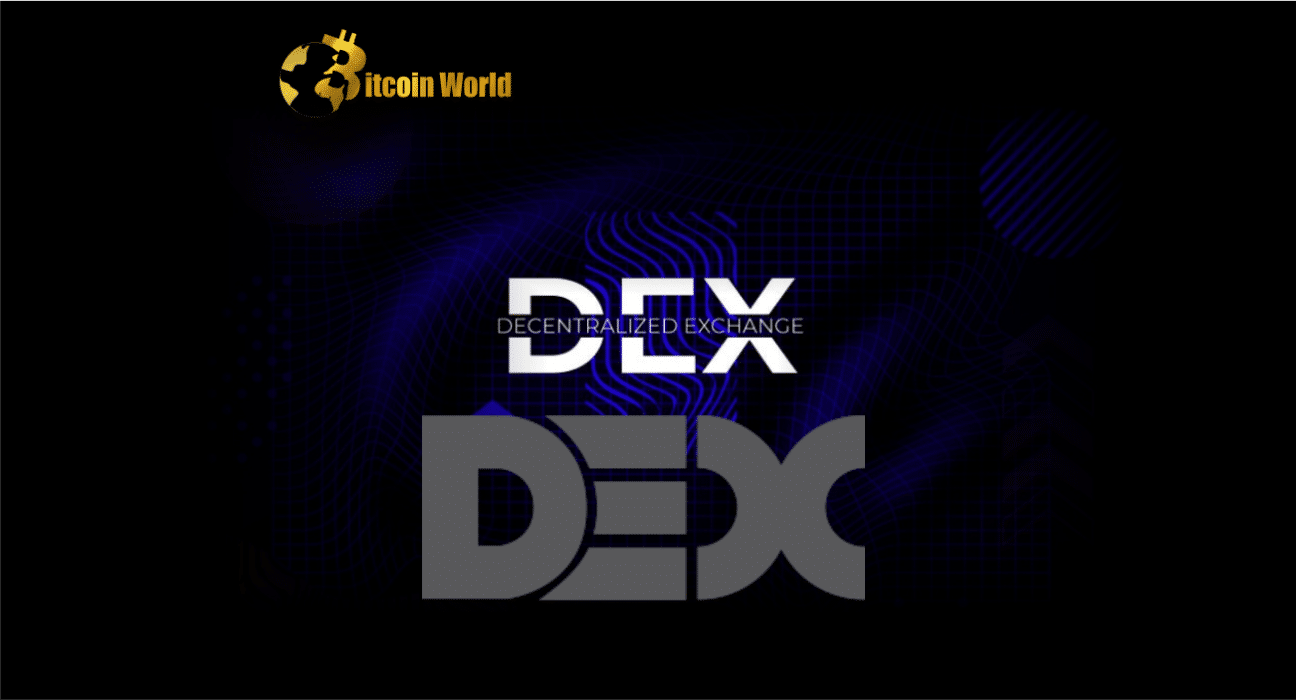The tremors from the Silicon Valley Bank (SVB) failure sent shockwaves through the financial world, and the crypto market was no exception. But instead of just panic, we witnessed a fascinating reaction: a significant flight of funds from centralized exchanges (CEXs) to decentralized exchanges (DEXs), with USD Coin (USDC) taking center stage. Why did this happen, and what does it tell us about the evolving crypto landscape? Let’s dive in.
The SVB Domino Effect: Why Crypto Investors Took Flight
When SVB crumbled, fear rippled through the markets. For crypto users holding assets on centralized platforms, the collapse triggered alarm bells. The core concern? Access to their funds. History has shown that in volatile times, the safety and accessibility of assets on CEXs can come into question. This fear, validated by past events like the FTX debacle, prompted a rapid response: a move towards decentralization.
Blockchain analysis firm Chainalysis highlighted this trend in a March 16 blog post, noting that:
“Outflows from centralized exchanges frequently surge when markets are volatile, since customers are likely concerned about losing access to their cash if exchanges fail.”
And the data backs this up. According to Chainalysis, the hourly outflows from CEXs to DEXs exploded. Just after SVB’s shutdown on March 11th, these outflows peaked at a staggering over $300 million. That’s a massive wave of capital seeking refuge in the decentralized realm.
Déjà Vu? Echoes of the FTX Collapse
This wasn’t the first time we’ve seen such a reaction. Remember the FTX collapse in 2022? A similar pattern emerged then, igniting worries about contagion spreading across the crypto ecosystem. Could the SVB fallout trigger another widespread crisis?
Data from Token Terminal offers a slightly different perspective. While daily trading volumes on major DEXs did spike during both the FTX and SVB events, this surge appears to have been temporary. This suggests that while users react quickly to crises by moving funds to DEXs, the heightened activity might not always translate into sustained long-term shifts in trading behavior.
USDC: The Unexpected Star of the DEX Migration
Among the assets flowing into DEXs, USDC stood out. Chainalysis pinpointed USDC as a leading asset in this migration, and for good reason. The stablecoin’s issuer, Circle, had announced that a significant portion of its reserves – a hefty $3.3 billion – were held at SVB and were potentially at risk. This news sent USDC off its dollar peg, causing major CEXs like Coinbase to temporarily halt USDC trading.
This de-pegging event, ironically, fueled USDC’s movement to DEXs. Why?
- Distrust in Centralized Platforms: The SVB situation amplified concerns about centralized entities, even for stablecoin reserves held in traditional banks.
- DEXs as a Safe Haven: DEXs, by their nature, offer users direct control over their assets. No intermediaries, no banks in between – just code and self-custody.
- Opportunity for Profit: Savvy traders recognized the USDC de-pegging as a potential buying opportunity. If USDC regained its $1 peg (which many believed it would), buying it at a discount on DEXs could yield a profit.
The Curve3pool and Uniswap USDC Surge: A Chainalysis Surprise
Chainalysis themselves were surprised by the sheer volume of USDC being acquired on prominent DEXs like Curve3pool and Uniswap. Their report stated:
“Many assets witnessed significant increases in user acquisition, but none more so than USDC.”
This wasn’t just about seasoned DeFi users. The data suggests a broader segment of crypto holders were turning to DEXs, specifically to interact with USDC.
Faith in the Peg: Buying Low, Betting on Recovery
Chainalysis proposed a compelling theory to explain this USDC buying frenzy on DEXs: faith in the stablecoin’s peg. Many crypto users, despite the temporary de-pegging, believed in USDC’s underlying stability and Circle’s commitment to restoring the peg. They saw the dip as a chance to “buy the dip,” stockpiling USDC while it was “cheap” – below its intended $1 value. This was essentially a bet that USDC would recover, and they were right.
As CoinMarketCap data confirms, USDC did indeed regain its peg on March 13th, just two days after the peak DEX outflows. Those who strategically acquired USDC on DEXs during the de-pegging likely benefited from this swift recovery.
Key Takeaways: What Does This Mean for Crypto?
The SVB-induced crypto fund flight to DEXs and the USDC saga offer several crucial insights:
- DEXs as a Crisis Refuge: Decentralized exchanges are increasingly seen as a safe haven during times of uncertainty in the centralized financial system. Users value the control and transparency DEXs offer when centralized platforms appear vulnerable.
- Stablecoin Resilience (with a caveat): While USDC de-pegged temporarily, its rapid recovery demonstrates the inherent resilience of well-managed stablecoins, even when faced with significant external shocks. However, it also highlights the importance of understanding the reserves and backing of stablecoins.
- User Empowerment: Crypto users are becoming more sophisticated and proactive in managing risk. The swift move to DEXs showcases a growing understanding of decentralized finance and a willingness to utilize it during market turbulence.
- Volatility Creates Opportunity: Even in crisis, opportunities arise in the crypto market. The USDC de-pegging event presented a chance for informed traders to capitalize on market inefficiencies and faith in underlying assets.
In conclusion, the SVB collapse served as a stress test for the crypto market, and DEXs emerged as a key beneficiary of investor anxieties. The USDC story, in particular, underscores the complex interplay of risk, faith, and opportunity in the volatile world of cryptocurrencies. As the crypto landscape continues to mature, understanding these dynamics is crucial for both users and the industry as a whole.
Disclaimer: The information provided is not trading advice, Bitcoinworld.co.in holds no liability for any investments made based on the information provided on this page. We strongly recommend independent research and/or consultation with a qualified professional before making any investment decisions.


